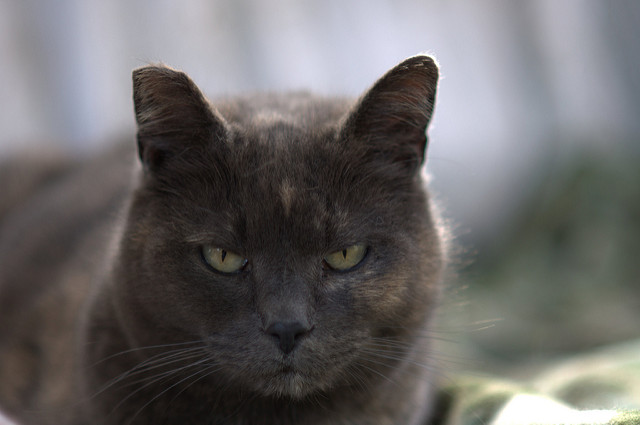Feral Cats Could Solve Chicago's Endless Rat Crisis
By Sophie Lucido Johnson in News on Apr 7, 2016 4:57PM
Sometimes the best solution to a problem is the most obvious one. As Chicago's burgeoning rat population becomes a direr threat with each passing year, Crain's reports that local communities are beginning to seek out a tried and true (if lately underutilized) fix: cats. Specifically, homeowners in the city are using feral cats to deal with overwhelming neighborhood rat populations. So far, the city has allowed 3,500 feral cats to be released in the Chicago area.
The unseasonably warm winter has accelerated already growing numbers of rats — there were 36,000 rats last year, and that number is expected to swell to 50,000 by December, according to Crain's. Besides being notorious cartoon villains (see: "Harry Potter," "The Animaniacs," and "The Teenage Mutant Ninja Turtles," among others), rats pose serious health threats, carrying dangerous and even deadly diseases like lymphocytic chroriomeningitis virus and Hantavirus Pulmonary Syndrome.
The pest control company Orkin has named Chicago "the rattiest city in the nation" for two years in a row. Regular old tactics—like hanging up terrifying signs with red-eyed rats urging people not to leave food out in alleys —seem to have failed, so the city has had to look at the problem with a fresh pair of eyes, Crain's reports. Enter The Tree House Humane Society, which has received the blessing of the city to place feral cats with local residences.
If you're thinking that releasing thousands of feral cats to run wild in the streets of Chicago sounds like a bad-idea-bordering-on-horror-movie-premise, calm down. The Tree House Human Society (which is rooted in Lincoln Park) has thoroughly thought through the details. They've dubbed this effort the Cats at Work program, and they're making sure that freed cats will stay happy, healthy, and safe.
Interested residences can shell out $500 to $600 for a three-cat placement, according to Crain's. (Cats are social animals, so the program prefers to place them in groups.)That cost provides it all: vetting, microchipping, rabies shots, medication treatment, spaying, a winterized cat shelter, heated water bowls, and a litter box. Paul Nickerson, the manager of the program, guides participating families through a brief acclimation process, and told Crain's that the cats are taken from the city's Animal Car & Control unit; most of them would have been euthanized were they not used in the program.
An important caveat: Cats don't just take down problematic vermin (if only there was a button on cats that would give them selective kill behavior). They also target welcome wildlife, like birds. A 2014 editorial in The New York Times warned against what it called "the evil of outdoor cats," urging owners to keep cats indoors: The intensification of agriculture has eliminated many bird habitats, and that cats have caused or contributed to the extinction of 33 species of bird.
The choice is yours, but a lot of people are choosing feral cats. As of now, the waiting list for the program is at least two weeks—and rats thrive in the spring, so interest is only growing. Interested persons can email Nickerson at TNR@treehouseanimals.org.
